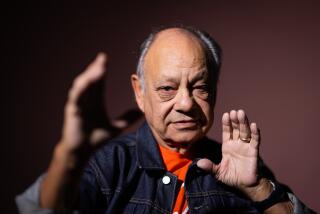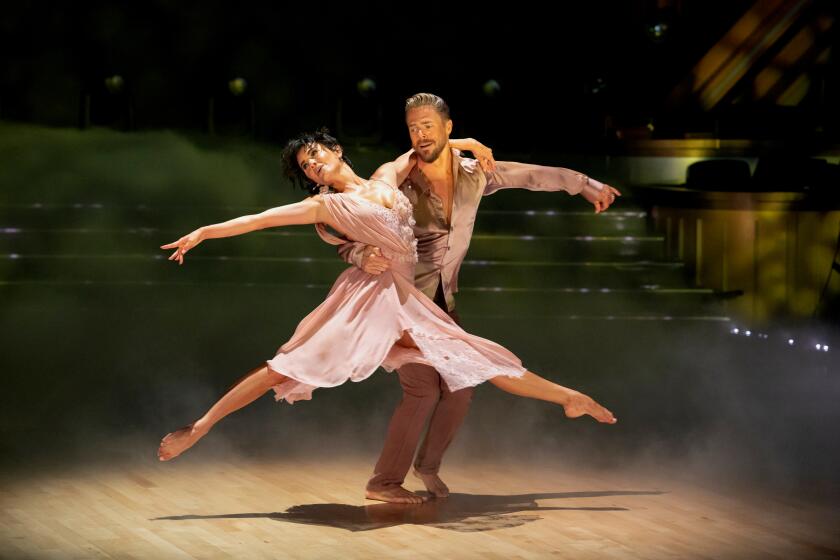âBrownâ Shows Nostalgia for U.S. Realism
Christopher Brown is an established San Francisco figurative painter in his mid-40s. His work, however, has appeared so rarely hereabout that USCâs showing of his prints and pastels virtually constitutes an L.A. debut.
Taken as a demonstration of individual sensibility, gifts and skills, âChristopher Brown: Works on Paperâ is a rather impressive affair. The artist draws and colors with pith, wit and thoughtful energy. Forced into service as a bellwether of the current state of aesthetics, the showing suggests an artist seeing the present in terms of the past. The work echoes Bay Area neo-figurative art of the late â50s, then shifts further into reverse, beating a hasty retreat back to the Depression era.
*
The exhibition was organized for the Palo Alto Cultural Center by its curator, Singe Mayfield. The art is willfully and unmistakably nostalgic about American realism during the modernist period. It leaves no room to assume that either Brown or the showâs organizers didnât know what they were doing. Thus the affair asserts a belief that art is now in a postmodern period and art like this is noteworthy.
The earliest piece on view is a 1980 etching called âThree Finger Model.â It depicts a style of baseball glove popular in 1951. Since thatâs the year Brown was born, the work takes on an autobiographical twist. Soon after the mitt, he depicted four U.S. heads of state, including presidents Garfield, Grant, Wilson and Lincoln in empathetic caricature.
They introduce an interest in history thatâs reinforced by such images as a Civil War-era fort and a nightmarish series of pastels on the assassination of President Kennedy. All of this is restrained from overt violence by a certain detachment.
Throughout the show Brown asserts an attraction to composing figures distributed more or less evenly across the picture surface. These birdâs-eye views depict crowds of men firing rifles, silhouettes of skaters, figures in clerical costume crossing city squares and sailors climbing flights of stairs. Aside from costumes and activities that identify the figures as types, they are anonymous.
In a somewhat serendipitous twist, Brownâs latest works consist of what might be called birdâs-eye views of birds. Itâs as if the artist is now watching the birds that used to be watching the people.
Quirky shifts like this save Brownâs art from appearing as a mere revivalist exercise. It comes across instead like the thoughts of someone in the confusing present taking stock by reconsidering the past. Taken together it provides a kind of X-ray of the artistâs mind, its content sloshing around unsorted until channeled into his work, where it begins to suggest certain preoccupations and directions.
Brownâs central concern has been art itself. He evokes other artists from Manet to Goya, from the socially conscious artists of the WPA to the San Francisco figurative painters of the â50s, like Diebenkorn, Bischoff and Park, who loved Abstract Expressionism but revolted against it.
All of them focused their talent on the human condition, an altruistic impulse Brown has shared, albeit with growing distance. With the bird pastels his thoughts seem to shift definitively to Audubon, Morris Graves and the metaphysic of nature.
The impulse to trade human unpredictability for the reassuring timelessness of things closer to the earth is much abroad in the land. Brownâs work looks like the artistic version of the urge to say to hell with it and move to Idaho.
* USC, Fisher Gallery, 823 Exposition Blvd., through Nov. 2, closed Sundays and Mondays, (213) 740-4561.
More to Read
The biggest entertainment stories
Get our big stories about Hollywood, film, television, music, arts, culture and more right in your inbox as soon as they publish.
You may occasionally receive promotional content from the Los Angeles Times.










